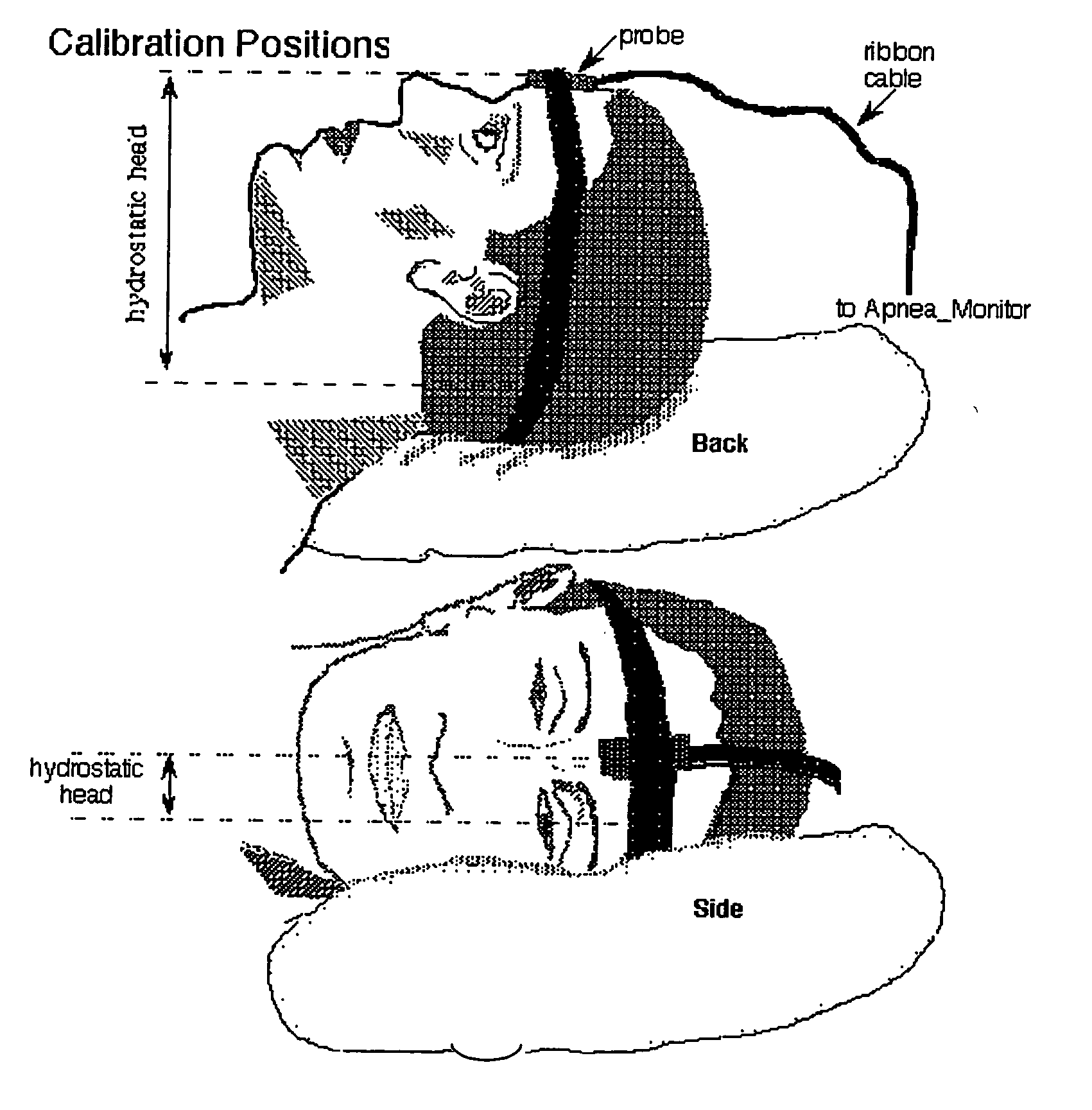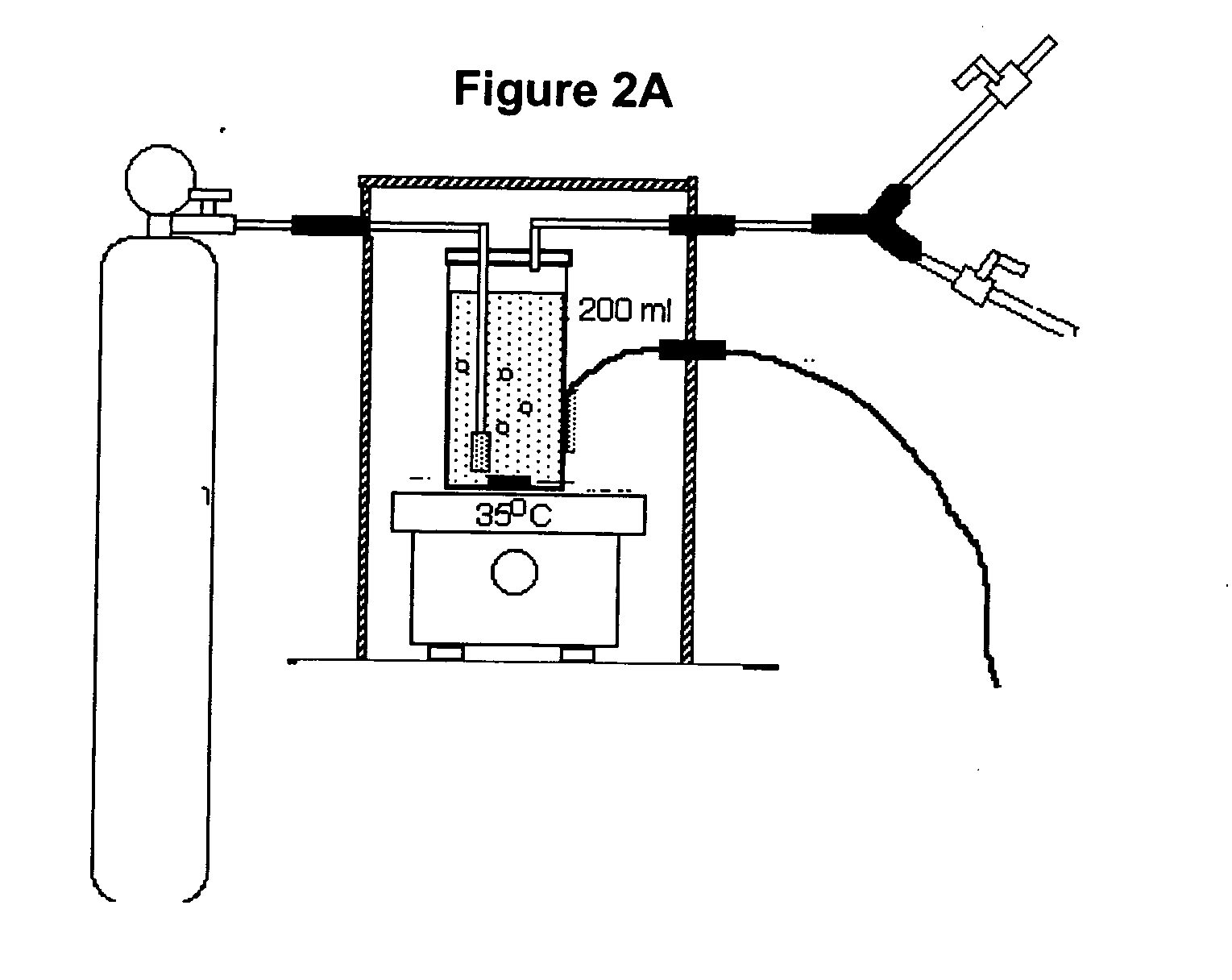Methods and apparatus for patient monitoring
a patient monitoring and apparatus technology, applied in the field of medical devices, can solve the problems of poor signal, limited diagnostic value of monitoring snoring as a diagnostic parameter, and inadequacies of finger attachment on subjects, and achieve the effect of reducing the hydrostatic head change effect on the blood oxygen index
- Summary
- Abstract
- Description
- Claims
- Application Information
AI Technical Summary
Benefits of technology
Problems solved by technology
Method used
Image
Examples
example 1
Use of NIRS for Measuring Physiological Parameters
(i) Blood Oxygen Saturation (StO2) Index
[0140]FIG. 1 illustrates the response of infrared light when transmitted through blood. The relatively low absorption of photons in the infrared part of the spectrum compared to that of the visible part of the spectrum (below 700 nm) is shown, as is an absorption peak centered at ˜760 nm evident with deoxygenated blood compared to oxygenated blood (StO2);
[0141] Finally, the wavelength at which the light absorption is independent of blood oxygen saturation levels, 810±5 nm, called the isosbestic wavelength, is also marked indicated in FIG. 1.
[0142] Above 810 nm, oxyhemoglobin shows a higher absorption than deoxyhemoglobin, the converse occurs below 810 nm.
[0143] A percentage of oxygen saturation of the hemoglobin within a tissue of interest can be calculated using NIRS from the following equation: stO2(%)=100-deoxyhemoglobin×100deoxyhemoglobin+oxyhemoglobin
[0144] The comparison of absor...
example 2
Device Linearity for the Measurement of Blood-Oxygen
Materials and Methods
[0149]FIG. 2A shows experimental conditions for testing the response of the device to changes in blood oxygen experimentally in vitro. The equipment in the top of FIG. 2A shows a method for obtaining a 0 to 100% oxygen saturation in blood (ignoring the likely 1% oxidized hemoglobin) in pH-buffered solutions containing a known concentration of hemoglobin (5%, 4%, 3%, 3%, 2%, 1%, 0.5%, 0%) (in sheep red blood cells). Oxygen is stripped from the hemoglobin via competition with activated aerobic yeast, which consume oxygen in their metabolic activity. Increased / decreased pressures above the solution help confirm that total oxygen saturation / desaturation of the hemoglobin has occurred. The hemoglobin is again oxygen saturated by aspirating fine bubbles of oxygen through the solution for some minutes. One hundred percent blood-oxygen saturation was confirmed by pressurizing the vessel to observe any further uptak...
example 3
Interpretation of Spectra Acquired by the Monitoring Apparatus: Analysis of Apnea Events
[0154] The apparatus schematically depicted in FIG. 3C was used for detecting respiratory parameters in a patient. FIG. 6 shows multiple peaks in both blood volume and blood oxygen while the subject is on their back. These are multiple mild apnea events, not present when the patient is lying on their side. Over the approximately 24 minutes of repeated apnea events there were no cumulative changes in blood volume or blood oxygen levels (average voltage maintained).
[0155] This suggests each brief recovery period was sufficient to return both oxygen saturation and blood volume to quiescent conditions, resulting in little oxygen stress. Examining the trace at briefer time intervals, enables the counting the number of these apnea events over time and thus a score of apnea or hypopnea events per hour can be obtained, as required for standard diagnostic criteria of sleep-disordered breathing.
[0156] ...
PUM
 Login to View More
Login to View More Abstract
Description
Claims
Application Information
 Login to View More
Login to View More - R&D
- Intellectual Property
- Life Sciences
- Materials
- Tech Scout
- Unparalleled Data Quality
- Higher Quality Content
- 60% Fewer Hallucinations
Browse by: Latest US Patents, China's latest patents, Technical Efficacy Thesaurus, Application Domain, Technology Topic, Popular Technical Reports.
© 2025 PatSnap. All rights reserved.Legal|Privacy policy|Modern Slavery Act Transparency Statement|Sitemap|About US| Contact US: help@patsnap.com



